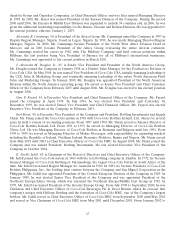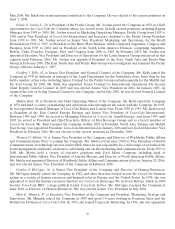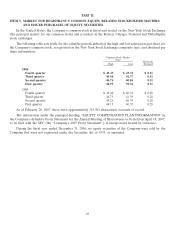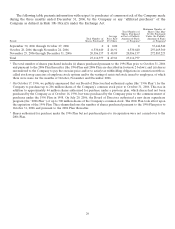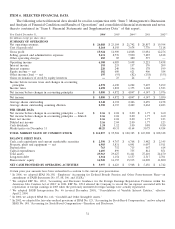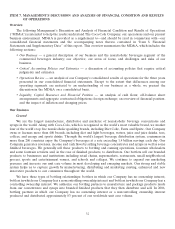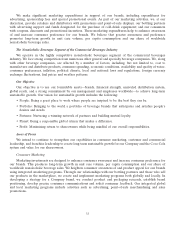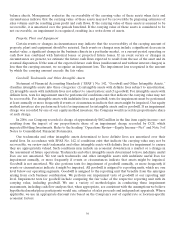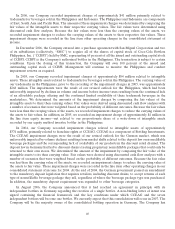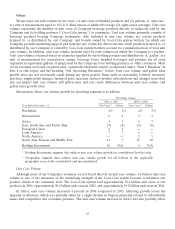Coca Cola 2006 Annual Report Download - page 37
Download and view the complete annual report
Please find page 37 of the 2006 Coca Cola annual report below. You can navigate through the pages in the report by either clicking on the pages listed below, or by using the keyword search tool below to find specific information within the annual report.continues to increase around the world, we expect commitment and continued action on our part will be crucial
in the successful long-term stewardship of this critical natural resource.
Evolving Consumer Preferences. Consumers want more choices. We are impacted by shifting consumer
demographics and needs, on-the-go lifestyles, aging populations in developed markets and consumers who are
empowered with more information than ever. We are committed to generating new avenues for growth through
our core brands with a focus on diet and light products. We are also committed to continuing to expand the
variety of choices we provide to consumers to meet their needs, desires and lifestyle choices.
Increased Competition and Capabilities in the Marketplace. Our Company is facing strong competition from
some well-established global companies and many local players. We must continue to selectively expand into
other profitable segments of the nonalcoholic beverages segment of the commercial beverages industry and
strengthen our capabilities in marketing and innovation in order to maintain our brand loyalty and market share.
All four of these challenges and risks—obesity and inactive lifestyles, water quality and quantity, evolving
consumer preferences and increased competition and capabilities in the marketplace—have the potential to
have a material adverse effect on the nonalcoholic beverages segment of the commercial beverages industry and
on our Company; however, we believe our Company is well positioned to appropriately address these challenges
and risks.
See also ‘‘Item 1A. Risk Factors’’ in Part I of this report for additional information about risks and
uncertainties facing our Company.
Critical Accounting Policies and Estimates
Our consolidated financial statements are prepared in accordance with generally accepted accounting
principles in the United States, which require management to make estimates, judgments and assumptions that
affect the amounts reported in the consolidated financial statements and accompanying notes. We believe that
our most critical accounting policies and estimates relate to the following:
• Basis of Presentation and Consolidation
• Recoverability of Noncurrent Assets
• Revenue Recognition
• Income Taxes
• Contingencies
Management has discussed the development, selection and disclosure of critical accounting policies and
estimates with the Audit Committee of the Company’s Board of Directors. While our estimates and assumptions
are based on our knowledge of current events and actions we may undertake in the future, actual results may
ultimately differ from these estimates and assumptions. For a discussion of the Company’s significant accounting
policies, refer to Note 1 of Notes to Consolidated Financial Statements.
Basis of Presentation and Consolidation
In December 2003, the Financial Accounting Standards Board (‘‘FASB’’) issued Interpretation No. 46(R).
We adopted Interpretation No. 46(R) effective April 2, 2004. Refer to Note 1 of Notes to Consolidated
Financial Statements.
Our Company consolidates all entities that we control by ownership of a majority voting interest as well as
variable interest entities for which our Company is the primary beneficiary. Our judgment in determining if we
are the primary beneficiary of the variable interest entities includes assessing our Company’s level of
involvement in setting up the entity, determining if the activities of the entity are substantially conducted on
35


